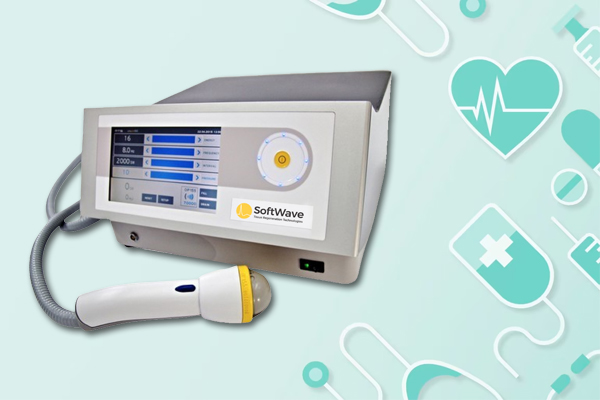In the ever-evolving landscape of medical treatments, a new player has emerged on the scene – Stem Wave Therapy. This groundbreaking approach has captured the attention of both patients and medical professionals, promising to revolutionize the way we address various health issues. In this article, we’ll delve into the depths of Stem Wave Therapy, exploring its mechanics, costs, insurance coverage, and most importantly, its efficacy.

What is Stem Wave Therapy
Stem Wave Therapy is a cutting-edge medical procedure that harnesses the power of sound waves and stem cells to accelerate the body’s natural healing processes. This non-invasive treatment is often utilized to address a wide range of conditions, including chronic pain, joint injuries, and musculoskeletal disorders.
Unlike traditional treatments that focus solely on managing symptoms, Stem Wave Therapy aims to stimulate the body’s innate regenerative abilities, providing long-lasting relief. It merges two distinct techniques – extracorporeal shockwave therapy (ESWT) and stem cell therapy. Let’s break down each component:
1. Extracorporeal Shockwave Therapy (ESWT)
Extracorporeal shockwave therapy involves the use of acoustic or sound waves to stimulate healing in various parts of the body. While the term “shockwave” might evoke images of intense electrical currents, these shockwaves are actually high-energy sound waves. When directed at targeted areas, they create controlled microtrauma, triggering the body’s natural response to repair the damaged tissue.
ESWT’s primary benefits include:
- Improved Blood Flow: The shockwaves encourage the formation of new blood vessels, enhancing blood circulation to the treated area.
- Cellular Regeneration: The microtrauma prompts the release of growth factors, which promote the regeneration of tissues and accelerate healing.
- Pain Reduction: ESWT has been shown to decrease pain by reducing inflammation and stimulating the body’s natural pain-relieving mechanisms.
2. Stem Cell Therapy
Stem cells are undifferentiated cells that have the remarkable ability to develop into various cell types within the body. These cells play a crucial role in repairing damaged tissues and supporting the body’s regenerative processes. Stem cell therapy involves introducing these cells into a targeted area to enhance healing and tissue regeneration.

How Does Stem Wave Therapy Work
At the heart of Stem Wave Therapy lies the ingenious fusion of two potent elements: sound waves and stem cells. Stem Wave Therapy takes advantage of the synergy between ESWT and stem cell therapy. By combining these two powerful techniques, practitioners aim to optimize the body’s ability to heal itself. Here’s how it works:
- Sound Wave Stimulation: High-intensity sound waves are directed towards the affected area. These waves penetrate deep into the tissue, creating microtrauma at a cellular level. While this might sound counterproductive, it actually triggers the body’s natural healing response. Blood flow increases, cellular repair mechanisms are activated, and growth factors are released, kickstarting the regeneration process.
- Stem Cell Introduction: Stem cells, often obtained from the patient’s own body (autologous) or from donors (allogeneic), play a pivotal role in enhancing the healing process. These versatile cells have the remarkable ability to transform into various cell types, promoting tissue repair and reducing inflammation. When combined with sound wave therapy, stem cells become even more effective, aiding in the restoration of damaged tissues.
The combination of sound wave stimulation and stem cell therapy creates an environment that maximizes the potential for tissue repair and rejuvenation.
Stem Wave Therapy Cost
Naturally, one of the first questions that come to mind when exploring new medical treatments is the cost involved. Stem Wave Therapy is an investment in your health, and its price can vary depending on factors such as the location, the specific condition being treated, and the number of sessions required.
On average, a single session can range from a few hundred to a few thousand dollars. While this might seem steep, it’s essential to consider the potential long-term benefits and the avoidance of ongoing expenses associated with chronic conditions.

Is Stem Wave Therapy Covered by Insurance
The question of insurance coverage is a valid concern for many considering Stem Wave Therapy. As of now, the coverage for this innovative treatment option can vary widely. Some insurance plans might provide partial coverage if Stem Wave Therapy is deemed medically necessary and meets specific criteria.
However, due to its relatively recent emergence, not all insurance providers include it in their coverage options. It’s advisable to thoroughly review your insurance policy or consult with your provider to understand the extent of coverage for Stem Wave Therapy.
Does Stem Wave Therapy Work
The ultimate litmus test for any medical treatment is its effectiveness. Stem Wave Therapy has garnered attention for its potential to yield remarkable results, especially in cases where traditional methods have fallen short. Numerous anecdotal success stories have emerged, showcasing the positive impact of this therapy on patients’ lives.
However, like any medical procedure, individual responses can vary. Research into the efficacy of Stem Wave Therapy is ongoing, and as the medical community gathers more data, a clearer picture of its success rates and limitations will emerge.
Applications of Stem Wave Therapy
Stem Wave Therapy holds promise for a wide range of medical conditions and injuries, including:
1. Musculoskeletal Injuries
Stem Wave Therapy has shown significant potential in treating musculoskeletal injuries, which involve the muscles, bones, tendons, ligaments, and other connective tissues. Common conditions that could benefit from this therapy include:
- Tendinitis: Inflammation of a tendon, often causing pain and restricted movement.
- Plantar Fasciitis: Inflammation of the thick tissue on the bottom of the foot, causing heel pain.
- Rotator Cuff Injuries: Damage to the muscles and tendons in the shoulder, often causing pain and reduced range of motion.
Stem Wave Therapy’s dual action of promoting tissue healing and reducing inflammation makes it a promising option for these types of injuries.
2. Chronic Pain Management
Chronic pain, which persists for weeks, months, or even years, can significantly impact a person’s quality of life. Stem Wave Therapy’s ability to stimulate tissue repair and modulate pain responses has garnered attention as a potential solution for chronic pain conditions such as:
- Chronic Low Back Pain: Stem Wave Therapy could target the affected area and potentially alleviate pain caused by conditions like degenerative disc disease.
- Fibromyalgia: By encouraging healing and reducing pain sensitivity, this therapy might offer relief to fibromyalgia sufferers.
- Osteoarthritis: Stem Wave Therapy’s regenerative properties could aid in managing pain and improving joint function in individuals with osteoarthritis.
3. Orthopedic Conditions
Orthopedic conditions involve the musculoskeletal system, and Stem Wave Therapy’s ability to promote tissue regeneration makes it relevant in this field. Some potential applications include:
- Joint Pain: Stem Wave Therapy could help reduce pain and improve mobility in conditions like knee, hip, and shoulder joint pain.
- Arthritis: By stimulating tissue repair and potentially slowing down joint degeneration, this therapy could benefit arthritis patients.
- Sports Injuries: Athletes with ligament, tendon, or muscle injuries might find relief through Stem Wave Therapy’s regenerative effects.
4. Wound Healing
Stem Wave Therapy’s capacity to enhance tissue regeneration and blood flow has implications for wound healing as well. It could potentially be used to improve healing in chronic wounds, diabetic ulcers, and other non-healing wounds.
5. Aesthetic and Rejuvenation Treatments
In the realm of aesthetics, Stem Wave Therapy’s regenerative properties are being investigated for various applications, including:
- Skin Rejuvenation: The therapy could promote collagen production and tissue repair, contributing to improved skin texture and appearance.
- Hair Restoration: By stimulating hair follicles and enhancing blood flow, Stem Wave Therapy might aid in hair growth for certain types of hair loss.
Final Thoughts
In the realm of medical advancements, Stem Wave Therapy stands as a beacon of hope, offering a novel approach to healing that capitalizes on the body’s natural abilities. By harnessing the power of sound waves and stem cells, this treatment is poised to reshape the way we address pain and promote recovery. While costs and insurance coverage remain considerations, the potential for improved quality of life cannot be overlooked. As with any medical decision, consulting with a qualified healthcare professional is essential to determine if Stem Wave Therapy is the right path for your unique circumstances.
While Stem Wave Therapy is generating excitement in the medical field, it’s important to note that research is ongoing to further understand its mechanisms and effectiveness. As with any medical treatment, consulting with a qualified healthcare professional is essential before pursuing Stem Wave Therapy.

